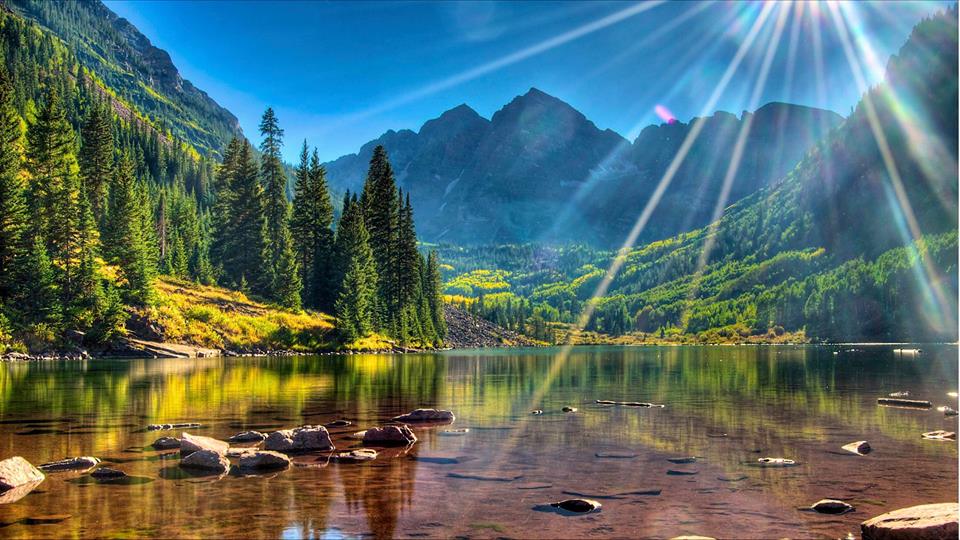-
Content count
11,288 -
Joined
-
Last visited
-
Days Won
243
Everything posted by doc benway
-
In my understanding, dzogchen is far more than a training method. The label dzogchen encompasses our view and understanding of reality, our training method, our daily interaction with the world through our behavior, and the ultimate outcome or fruition of engaging in this path. The basic tenet is that reality is absolutely perfect just as it is. Enlightenment is always already present in us but obscured by karma and habit. Nothing has ever needed to be changed, nothing added or subtracted. This radical view has been the subject of criticism and controversy from earliest times to the present day. I've seen people get quite frustrated, indignant, even angry when trying to come to grips with the view in teachings. One important point is that this view is from the side of the mind's essence which is primordially pure and perfect. All the qualities of enlightenment, such as the ten paramitas and four immeasurables are already alive in us just waiting to be unveiled. And the avenue to reach that is through doing and changing absolutely nothing whatsoever. In the dzogchen paradigm, each of these four - view, meditation, conduct, and fruition is precisely the same as the other three. That is they are inseparable other than as an artificial distinction for the sake of communication and learning. Just thought I'd add more fodder for discussion. It's one of my favorite topics.
-
In teachings I've received this distinction between mindfulness and resting in the nature of mind is considered very important. Mindfulness necessarily implies subject-object duality, a sense of subject is present who is remaining mindful or observing. Mindfulness may be defined differently in Mahamudra, I know very little about it, but this is one difference between the two from the Bön dzogchen perspective as far as I've come to understand. Dzogchen abiding, or trekchod, involves releasing even the effort or focus associated with remaining mindful into the spaciousness and immediacy of the present moment. One technique for doing this is precisely what CT mentions. A thought invariably arises and is allowed to be as it is. If it releases effortlessly, we simply continue to abide but when the watcher arises, the instruction is to turn the attention toward the watcher and simply observe. There is nothing there, nothing to grasp. The watcher is now watching itself and extinguishes itself, and that openness and freshness is where dzogchen practice occurs. Similar to mindfulness, there is a need to maintain this "state" of abiding and there are aspects of the awareness that are engaged in identifying when we have disconnected and so forth. This is a subject of some of the more subtle and advanced understandings of the practice. The other thing I'll share is that in the dzogchen teachings I've received, no distinction is made between practicing with appearances and practicing with awareness. This may be a difference between Bön and Buddhist traditions or between Mahamudra and dzogchen teachings in general, I don't know. The two, appearance and awareness, are inextricably related. It is said in the dzogchen teachings that when sounds, lights, and rays (eg any appearances, including thought and feeling) present to the ordinary mind through the sense gates these appearances are impure and karmic traces are generated. When those same appearances present to the mind's essence, they are pure and inherently perfect, generating no karmic traces. This is the source of the name "dzogchen" and is the basis for the practice of thodgal. The general idea in dzogchen is to practice with the senses fully open, including the eyes. The sense gates are open but unfocused on anything in particular. Once stability in this mode of abiding is achieved sitting quietly and undisturbed on the meditation cushion, the instruction is to begin to integrate this with all appearances in an active fashion. The behavior as described in dzogchen instruction is that all appearances become the path, this is what we "work" with in what is referred to as informal practice - everything that presents itself is the path. Of course, it takes time to get to the point where our precision and stability allow this level of integration. There is a book by His Eminence Tenzin Namdak Rinpoche, the most senior Bön practitioner currently alive, called Bönpo Dzogchen. It is largely a relatively comprehensive comparison of dzogchen to other methods of practice, including Mahamudra. If anyone is interested in the theoretical basis of sutra, tantra, and dzogchen and how they relate to each other and other specific practices from a Bön perspective, it's a very good resource. As I recall it even addresses differences and similarity between Bön and Buddhist dzogchen. One caveat, my knowledge and experience are very limited, especially my scholarship and theoretical knowledge. Take everything I say with a heaping tablespoon of salt. One last thing I'll mention is that there are four distinct lineages of dzogchen teachings in Bön. The first and most treasured is the Zhangzhung Nyengüd, said to be an unbroken transmission of the teachings (oral only until the 8th century then written down) from the Nature of Mind itself, Samantabhadra, to the present time. The others are A-Tri, Drakpa Korsum, and Yetri Thasel. Each lineage has slightly different emphasis and qualities but again, all have comparable view, meditation, behavior, and conduct.
-
I think there are some differences in form and character. I don't think they affect the essence of the view, practice, or fruition. The lineage and iconography are certainly different with some overlap. There are some who believe Bön dzogchen came from India however Bönpos attribute their dzogchen teachings to Tonpa Shenrab and central Asia. You do see some variation in language, emphasis and metaphors in the teachings. Bönpo teachings often incorporate terms from the Zhangzhung language but I think there are some differences even in the use of Tibetan and Sanskrit at times. Bön teachings tend to be a bit more sparse, metaphorical and practice focused than much of the Buddhist scripture I've read but I've received little in the way of teachings in Buddhist dzogchen so qualify my comments. I've been told that the presentation of trekchod and thogal teachings differs a bit between the two, but for all intents and purposes I believe the view, practices, and result are essentially the same.
-
It appears that Steve Gray, aka Starjumper, has passed on. Steve was a frequent participant here over the years. He was brash, outspoken, and entertaining. He was a practitioner and teacher of Chinese martial arts and neigong and author of A Lineage of Dragons and Zhan Zhuang Power Secrets. I did not always see eye to eye with Steve but I am sorry to hear of his passing. My condolences go out to his loved ones. Rest in Peace @Starjumper
- 40 replies
-
- 17
-

-

-

-
@Jadespear I appreciate your response and insights. I was interested in your thoughts in part because I haven't often seen Daoists talk about "self/Self," not something my Daoist teacher ever discussed, and I was curious how that might be defined or described. Like you it seems, I am far more interested in practice and practical application than scholarship. My tendency is to be too much in my head, very analytical, so emphasizing the practical and experiential side of these things is a better use of my time and energy. Actually one can but I don't recommend it!
-
Rest in peace dear Cheya! 🙏🏼❤️🙏🏼
-
ancestral present historical progeny prestidigitize!
-

Frustration in searching for a style or lineage to learn
doc benway replied to Saan's topic in Daoist Discussion
Tenzin Wangyal Rinpoche also offers regular free teachings through his Facebook page and cybersangha.net. The majority of his pre-recorded online programs are now hosted on ligminchalearning.com. There is indeed a practice similar to pore breathing in the Bön tradition. It is not generally taught as a complete method in and of itself but is a part of practices such as tsa lung and trul khor that address imbalances or blockages in the subtle and physical bodies through connecting with the five subtle winds - upper moving wind, life force wind, fire like wind, downward clearing wind, and pervasive wind. When working with the pervasive wind a style of breathing is used that is similar to pore breathing. Free instruction on the five external tsa lung practices can be found as one part of the introductory, self-paced program here. A deeper dive into the five winds and tsa lung practices is available from one of Tenzin Rinpoche's senior teachers, Alejandro Chaoul, through the paid, self-paced program here. Alejandro is an experienced practitioner and has devoted decades to studying tsa lung and trul khor, bringing these practices to cancer patients at the MD Anderson Cancer Center in Houston, Texas. It is not possible to learn all styles of breathing and no particular "style" of breathing is necessary to make progress though different techniques can be very supportive depending on your particular focus at any point along the path. For example, in the practice of Tummo (inner fire), very precise breathing methods are combined with posture and visualization (this is known as engaging body [posture], speech [related to breathing pattern], and mind [visualization] which is a common thread in Bön and Buddhist methods) to achieve a particular objective - generating internal heat to help cleanse the central channel of the most subtle obstacles to abiding in the natural state. IMO, aside from those related to very specific methods like Tummo, there is no style of breathing that is more supportive in "making progress" than simply allowing the breath to follow it's own natural course and rhythm. For such natural breathing to be efficient and effective, it is important to become aware of maladaptive breathing patterns many of us have adopted over the course of our lives that interfere with optimal gas exchange and oxygenation. -
I see karma as independent of morality. Morality and ethics are judgements made by humans, based on empathy and conditioning, which are superimposed on the workings of karma. It “works” when we apply consistent definitions and expectations of what is moral or ethical onto observed phenomena that are related through action and intention.
-
My impression is that the vast majority of people identifying with being religious or spiritual are using their religion as an excuse, a balm, or an antidote for immoral and unethical behavior. In fact, some religions are inherently and irrevocably immoral, manipulating masses, creating slaves, and turning populations into fodder for geo-political objectives - christianity in the 21st century united states is a model for this travesty. I feel that morality is not an integral part of spirituality and the majority of folks I have encountered in my lifetime who consider themselves highly spiritual fail miserably by my personal measures of morality. I hold morality to be an individual standard, influenced by all forms of conditioning (religious, societal, cultural, parental, educational, etc...), but ultimately an individually determined standard. Skillful and dedicated spiritual practice can and does lead to a perspective in many people which is highly moral, this is spontaneous and unconditional empathy, but that is the exception rather than the rule in my limited experience.
-

Sadhguru on being stoned and alert at the same time without intoxicants
doc benway replied to Ajay0's topic in General Discussion
I think he Sadhguru was trying to suggest that through meditation we can feel relieved of our burdensome mental discomfort, you could say blissful, while remaining clear and alert. Using the term stoned was a poor choice, IMO, but I think I get his point. -
Thanks for that. In the Daoist context is that irreducible and immutable nature unique to each individual or universal, as in the Hindu paradigm? Furthermore, can you share what the Daoist teaching say about what it is about this Self that is irreducible and immutable?
-

What Books are by Your Bed?
doc benway replied to TheSongsofDistantEarth's topic in General Discussion
What a blast from the past! Wonderful novel. Currently reading: Wholeness and the Implicate Order - David Bohm A few I recently finished: How High We Go in the Dark - Sequoia Nagamatsu The Queen's Gambit - Walter Tevis D (A Tale of Two Worlds) - Michael Faber Observer - Robert Lanza and Nancy Kress On my next to read list : The Book of Form and Emptiness - Ruth Ozeki My Grandmother's Hands - Resmaa Menakem The Structure of Scientific Revolution - Thomas Kuhn Ongoing spiritual study: The Practice of the Tiglé of the Elements - Lopon Tenzin Namdak Rinpoche The Seven Mirrors of Dzogchen - Lachen Drenpa Namkha -
I agree
-
My interpretation of “one-pointedness” is that it is more closely related to concentration and connection than to naked awareness per se. One-pointedness is a critical part of how we engage in the practice of naked awareness for sure but it is also a component of other practices requiring concentration such as shamatha, zhiné, generation and completion stage practices, and so forth. Just my perspective fwiw.
-

"Going back to Vipassana-style meditation for a while."
doc benway replied to Mark Foote's topic in Buddhist Discussion
I've come to feel there is more to the complexity than mere socio-political accretion and that it may be a very useful component of the Vajrayana path. In a way, moving through the massive Madhyamaka teachings and process of debate is like pumping iron with the conceptual and rational processes of mind leading eventually to exhaustion as much as "understanding." As the exhausted mind rests it can then open to a non-conceptual frame of reference which approaches the realization of emptiness (of self). In much the same way, the complexities of tantra exercise the powers of visualization and concentration to the point of thorough exhaustion leading to a deep familiarity and trust in non-conceptual being... or something like that. -
-
Werner Heisenberg is out for a drive when he's stopped by a traffic cop. The cop says, "Sir, do you know how fast you were going?" Heisenberg says, "No, but I know where I am."
-

Seeing, Recognising & Maintaining One's Enlightening Potential
doc benway replied to C T's topic in Buddhist Textual Studies
One of my teachers uses this beautiful and simple gesture to illustrate and remind us of this point.... -

Seeing, Recognising & Maintaining One's Enlightening Potential
doc benway replied to C T's topic in Buddhist Textual Studies
I have no right to call myself one who knows. I was one who seeks, and I still am, but I no longer seek in the stars or in books; I'm beginning to hear the teachings of my blood pulsing within me. My story isn't pleasant, it's not sweet and harmonious like the invented stories; it tastes of folly and bewilderment, of madness and dream, like the life of all people who no longer want to lie to themselves. ~Hermann Hesse -
Thanks
-

Does meditating on the Dan Tian build up the Qi there?
doc benway replied to CyrusTheGreat's topic in Daoist Discussion
Mod message The insulting remarks and derailing posts have been moved to the pit to allow the discussion to continue without interference. -
Tögal, at least the way I've been instructed, can only be practiced when one is fully resting in the nature of mind. If subject-object duality is present, something that is necessary for someone to do work of any kind, tögal is no longer being practiced. Tögal visions are, by definition, visions that arise in the absence of subject-object duality. So I tend to separate tögal practice from other subtle energy practices for this reason.
-
For discussion’s sake - I do consider there to be some conceptual framework in action during energy work, subtle or otherwise, but I don’t consider togal practice to be subtle energy work at all.
-
In my experience, concepts are ubiquitous and never-ending. I tend to be overly analytical and dominated by the thinking mind. For this reason, I do tend to emphasize the non-conceptual over the conceptual when discussing and practicing matters of the spirit. Not because I necessarily feel the non-conceptual approach or destination is more effective or even more important. Simply because it is so foreign and unfamiliar that it doesn't stand a chance in my own experience if not over-emphasized.



